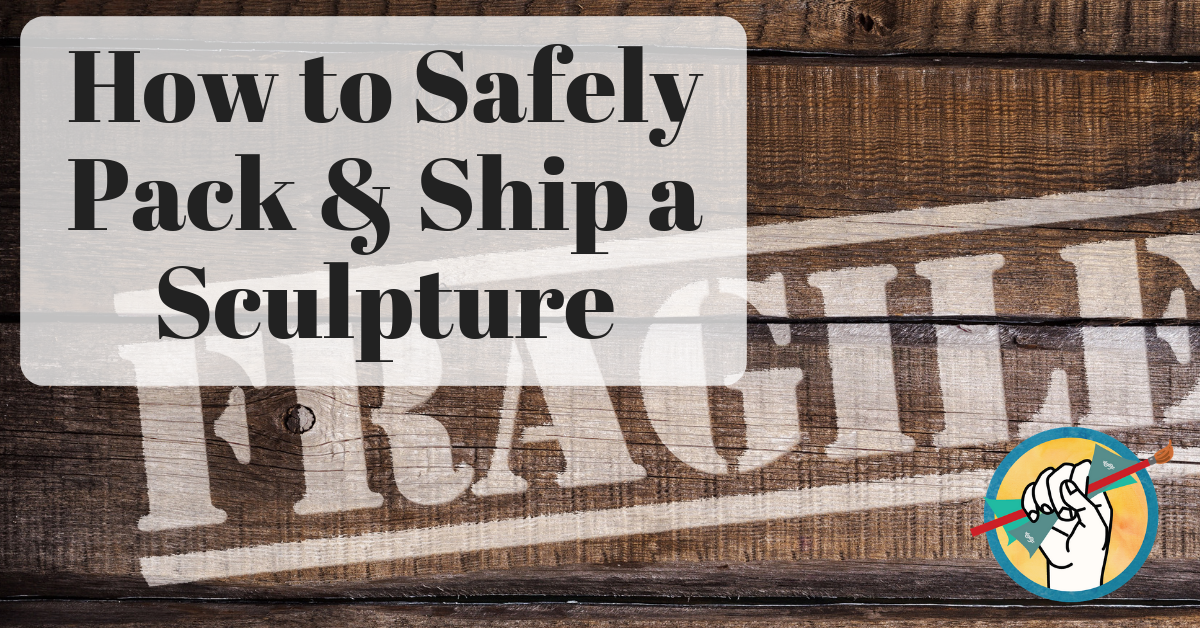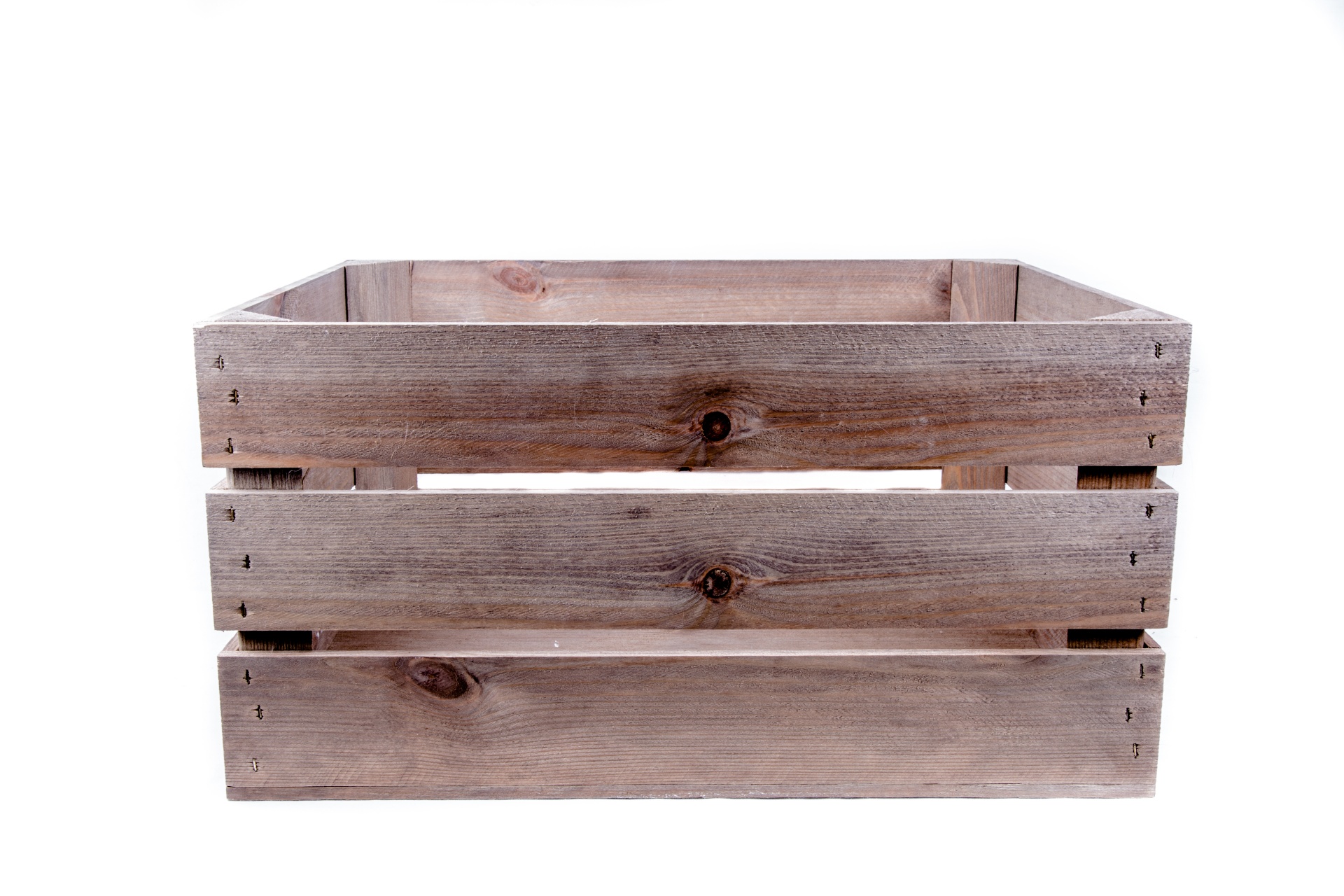Are you a 3D artist who wants to ship your art to collectors, but is terrified of sending your baby through the postal service? Shipping sculpture art is a very different beast from packing and shipping 2D art like paintings. We’ve all heard horror stories of art that arrived in horrible condition due in part to poor packing and partly to poor treatment. Unfortunately you can’t control the actions of anyone else in the chain that gets your art from studio to collector, but there is a lot you can do to safeguard your art as it makes the journey to its final destination.

For the purposes of this article, “sculpture” includes all 3-dimensional art- glass art, ceramics, clay, mixed-media, recycled/found object, etc.
The primary factors you’ll be taking into consideration when shipping 3D work are:
- Keeping the work upright
- Protecting it from shaking/jostling
- Protecting it from impacts, whether from bumping or dropping
How to Safely Ship a Sculpture
How to ship a sculpture that is under 12” tall and around 5 lbs or less:
-
- Bubble wrap. Wrap the top of the sculpture securely in bubble wrap, and secure with tape. If the surface of the work is delicate, use artist tape to protect it from tape residue or being damaged when you pull the tape off. Seal all seams with tape. Next wrap the bottom of the sculpture in bubble wrap, sealing all seams with tape in the same fashion. Wrap extra bubble wrap around the middle of the work if necessary, and secure all seams with tape. When you’re finished, the work should be completely wrapped with bubble wrap and completely sealed with no openings.

“Bubble wrap”, public domain image - Prepare your box. Your box should be several inches larger than your sculpture on all sides. This is to protect the sculpture from impact against the sides of the box. Fill the bottom of the box with several inches of your selected packing material. Many artists use packing peanuts, but be aware that these can shift around in transit. For this reason, some shipping professionals suggest tightly packed shredded paper. The bottom of the box should be filled with a material that will not allow the sculpture to shift through and down to settle on the bottom of the box.
- Place the sculpture and fill in the spaces. Place the work inside the prepared box, ensuring that the sculpture won’t wiggle through to the bottom of the box. Begin to carefully fill in all empty spaces in the box with packing material. There should be 2-3 inches around all sides of the work as well as at the top to completely insulate it from being jarred or bumped through the side of the box. Tape the top shut (see note below.)

“Shredded white paper”, public domain image - Optional: double box method. For especially fragile works, some artists prefer to double-box their art. Wrap the artwork and pack the first box as described, then prepare a second, larger box with several inches of packing material at the bottom. Place the first box (with a taped top) into the second box, and fill in all space between the two boxes tightly with packing material. This adds an extra barrier between your work and the outside world and keeps the work as stable and still as possible. Tape the top of the second box (see note below.)
- Mark the box. Use labels or a thick marker to mark the outside box as FRAGILE, and clearly label on each side which way is up: THIS SIDE UP, with an arrow pointing up to the top of the box.
- Bubble wrap. Wrap the top of the sculpture securely in bubble wrap, and secure with tape. If the surface of the work is delicate, use artist tape to protect it from tape residue or being damaged when you pull the tape off. Seal all seams with tape. Next wrap the bottom of the sculpture in bubble wrap, sealing all seams with tape in the same fashion. Wrap extra bubble wrap around the middle of the work if necessary, and secure all seams with tape. When you’re finished, the work should be completely wrapped with bubble wrap and completely sealed with no openings.
Tape Your Box with the H-Tape Method
The H-tape method is widely considered the most secure way to tape boxes shut for shipping. It’s simple: just tape along all the seams along the sides and in the center. This will result in an H-shape along the top of the box.
How to ship a sculpture over 12” tall and/or over 5 lbs:
- Bubble wrap. Bubble-wrap the work using the same method described above. Wrap the piece in sections, and seal all seams with tape.
- Use a wooden crate. For heavier and larger works that have a greater surface area and thus are more likely to be bumped or jostled, a wooden crate provides better protection. Saatchi art has a useful guide to building a custom wooden crate here: https://support.saatchiart.com/hc/en-us/articles/205288907-How-do-I-pack-work-in-a-crate-. Pack the work inside the crate as described above, first preparing the crate with several inches of packing material at the bottom, then filling in all spaces around the work with packing material.

“Wooden crate”, public domain image - Optional: double box method. For extra protection, you can double-box your work as described above. In this case, the interior box can be made of cardboard as its primary purpose is to hold the packing material in place around the work and prevent it from shifting. The exterior box will be your wooden crate, which provides the first line of defense against impacts.
Optional: Strap Your Work to a Pallet
If your work is exceptionally fragile or asymmetrical, you can strap the box down to a pallet. This prevents it from being directly bumped, shaken, or turned upside down. Randy Strong’s website gives some good advice for shipping his work which is useful for other artists with especially fragile work.
Whether you’re shipping a small clay sculpture or a huge piece of recycled art, the main point to keep it mind is that you can’t control how other people treat your art during the shipping process. So you need to do everything in your power to ensure that the art stays upright and protected from bumps, falls, and being shaken. And even though it’s unlikely, be prepared for the worst with a clear return policy on your website.
Compare notes with other pro sculpture artists in The Association
Do you have any tried-and-true tips for shipping 3D artwork? We’ve love to hear from you in the comments!
Also important is to add here that if it is heavy you need freight. Regular UPS won’t do it. Consider if you need a lift gate at pick up or delivery
Instructions inside the crate are important and keep container with packing, for return.
Insure the artwork in transition.
My general suggestion is to build the crate tougher than you think it needs to be built. All the makers I know who ship things do this. It’s better to build it too stout and have nothing happen, than it is to get that phone call from a client saying that the item you just spent hundreds of hours creating arrived at their location, damaged. Bolt or screw the sculpture to the base of the crate and assemble the other five sides around it with plenty of room allowed on each side for hits or movement. Attach skids to the bottom of the crate so that it can easily be moved via automatic forks or a hand truck. The easier you make it for them to handle it, the less likely it is to get damaged.
I like what you said about using a wooden crate to protect your sculpture from being bumped while it’s shipped. My wife would like to get some new sculptures for our garden soon, and she wants to make sure that they get here in one piece. I’ll share this information with her so that she knows how they could be shipped.
I found this article during my surfing around to keep up on the shipping technology available for our artist and antique customers (I am in the business of shipping and inventory insurance, specializing in high value items).
This was a refreshing piece to find! I concur with the author. We recommend to our customers all of the above, as well as being pro-active in the means of shipment you choose. The longer your masterpiece is out in transit, the higher the risk. Spend the extra money to lessen that risk. Especially if you are not insured (carriers’ declared value is NOT insurance and if you read the small print, you will find there is a low cap on certain items and fine art, antiques, etc. are within that small print). You also want to keep in mind that insuring with the carrier requires you to declare a value. This declaration flags your shipment for theft. It is often too late when shippers realize these details as it often is not known until there is a loss – which is why we started our business in the first place. We know exactly what you go through.
Artists of all kinds should never put their one of a kind works at such risk. Find a third party insurance for yourself! It is also MUCH less expensive insurance than the carriers offer as well as at the values you need and your items are actually covered. I simply wanted to concur, support and to share some information for my fellow artists that may read this.